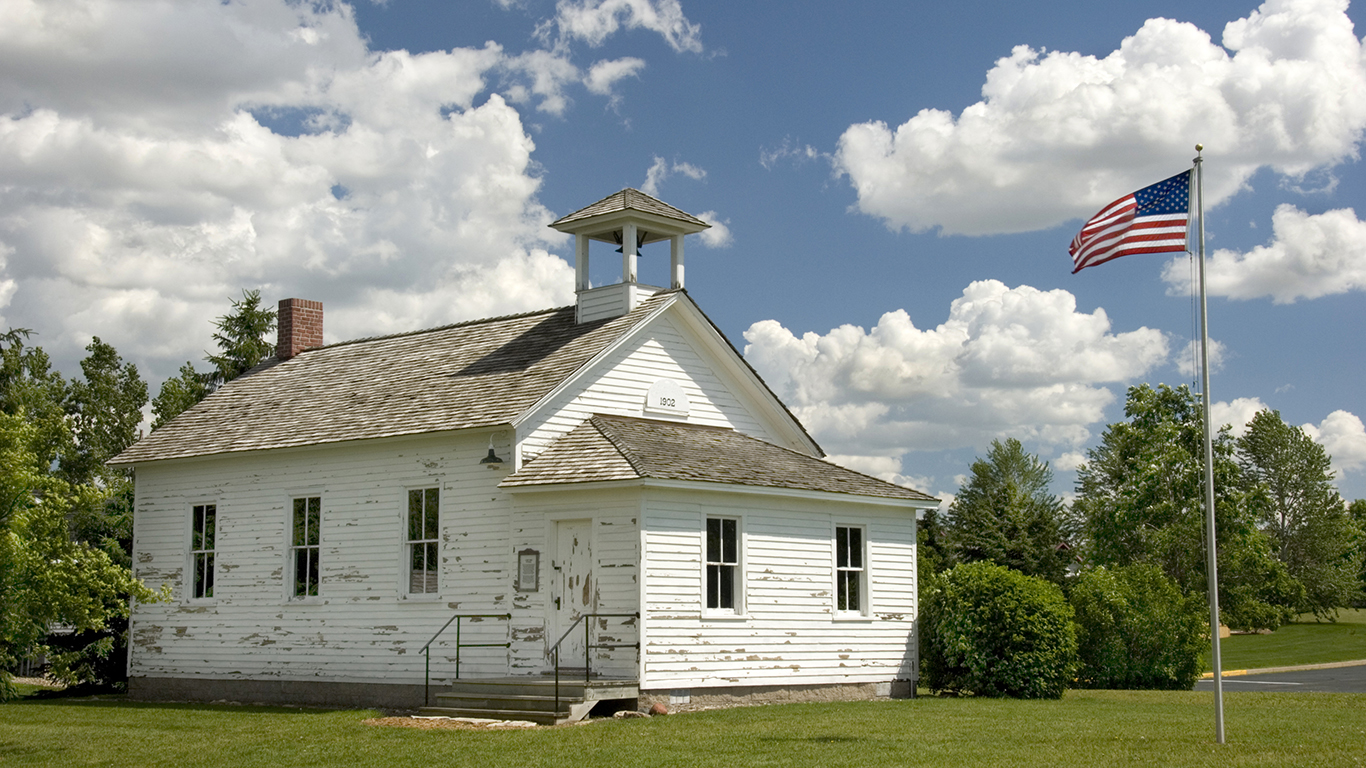
The 2020/2021 academic year is nothing like any student, parent, or even grandparent has ever experienced. Before self-isolation, remote learning, mask wearing, and temperature checks at the door became normal, students’ biggest concerns were much more familiar — often related to their studies, social activities, and sports.
Though the COVID-19 pandemic has changed the typical school day in ways that children, teachers, and parents are still adapting to, many students still have a lot of choices and opportunities related to their academic course, sports, and social interactions. But it wasn’t always this way. School in the past looked a lot different.
24/7 Tempo has taken this opportunity to examine what school days used to look like. We reviewed materials from archival resources such as the New England Historical Society, media sources, and the National Center for Education Statistics to compile our list.
Education and its role in society have been matters of debate and discussion. That may be the only similarity between schools of today and schools of the past. Technology has revolutionized learning, though today there is concern about the digital divide and the lack of access to technology for students in poorer districts, which has been deepened by the COVID-19 outbreak — these are the school districts in every state where students are most likely to succeed.
There is some debate about the merits of homework, which in the past could occupy a full evening. And there is concern that students are overscheduled with activities such as sports and clubs and are pressured to complete homework in a timely manner. Remote learning will probably change that as well.
One of the biggest differences in schools today versus the past is security. Schools have almost become mini-fortresses, with sophisticated locking mechanisms, security cameras, and security personnel. School districts employ these prevention methods to avert the kind of mass shootings that occurred at Columbine High School in Colorado and Sandy Hook Elementary School in Connecticut. But not all schools are set up that way. And security is just one factor in identifying a good school. Here is the best public high school in every state.
Click here to read about what school days used to look like.

1. Teachers had more authority
Teachers were respected authority figures who meted out punishment to unruly students to enforce discipline. Sometimes that punishment could be physical, such as rapping students on their knuckles with a ruler or a pointer. Corporal punishment was ruled constitutional by the U.S. Supreme Court in 1977, leaving it to the states to make their rules. Punitive physical measures are still legal in 19 states. The criticism of the practice is that it is disproportionately applied to African-Americans, boys, and those with disabilities.
[in-text-ad]
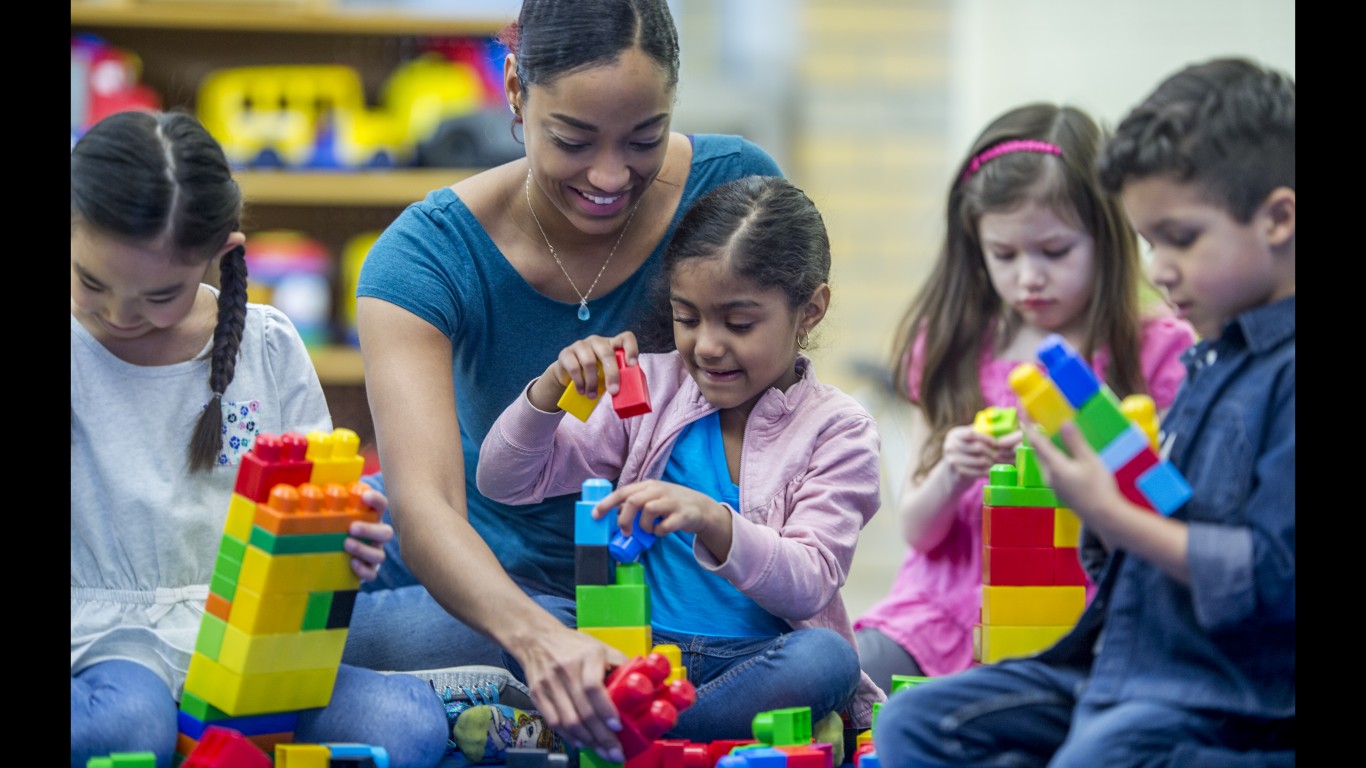
2. Fewer teacher assistants
The number of teacher assistants, who give students additional help with subjects, has grown dramatically, and will continue to do so. According to the Bureau of Labor Statistics, employment of teacher assistants is projected to grow 8% from 2016 to 2026 because of an expected increase in student enrollment, along with state and federal funding for education.

3. Longer walking to school
Young people roll their eyes when their elders tell them they had to walk miles to school. But that was a reality years ago when America was a more rural nation, families had one car if they had one at all, and bus service was limited.

4. Different curriculum
Teachers taught algebra and geometry, biology and chemistry, science, reading, writing, history, geography, and languages like French, Spanish, and Latin. They still learn all of those, however, the curriculum has been augmented by additional math courses such as trigonometry and calculus. Literature has been broadened to include more works from people of color and women. Language selection now includes Mandarin Chinese, Japanese and American Sign Language.
[in-text-ad-2]

5. No technology
The biggest difference between school days today and what they used to look like is technology. Virtually all students have access to the internet at home or they can access it at the local library. Students go online on personal computers, laptops, cellphones, tablets, and iPads, among other devices. Much learning is now done online, and technology has accelerated the pace of education. Of concern is the digital divide, also called the homework gap. Students lacking technology are put at a disadvantage.

6. Less support staff
A notable change in school nowadays compared with the past is the number of support staff. Besides an increase in administration personnel such as vice or assistant principals, schools now employ health services staff such as social workers, psychologists, and speech therapists, as well as security personnel.
[in-text-ad]

7. Fewer activities
There have always been activities for students in school — debate clubs, theater, yearbook, band, color guard, and language clubs. Those activities are alive and well, but today there is so much more for students. A big difference today is the addition of activities geared toward community service such as food drives, involvement in Special Olympics, and peer counseling. Heritage or cultural clubs pertaining to ethnicity or sexual orientation can also be found in schools today.

8. Fewer sports, especially for girls
Ice hockey and soccer were rarely played in schools and have climbed in interest in the last generation. Ice hockey is primarily played in affluent suburbs. But the biggest difference now vs. then has been the explosion in girls sports. Following the passage of Title IX in 1972, which mandated participation equity between the genders for schools receiving federal assistance, the number of girls participating in sports has mushroomed. According to the website womenssportsfoundation.org, before Title IX, one in 27 girls played sports. Today, that ratio is two in five.

9. Homework
There was no debate about homework in the past. Oftentimes, students would get three or four hours of it a night. Today, the merits of homework are under scrutiny. Skeptics say there is little to be gained if the student doesn’t understand the material in school and struggles with it at home, requiring help from parents and others. Also, they doubt homework contributes to academic achievement. Students are also busy with activities outside of school — sports, music lessons, theater, martial arts — that strain their schedule. Proponents of homework contend it promotes good study habits and gives parents a better understanding of what their child is learning in school.
[in-text-ad-2]

10. Libraries were not media centers
The pace of technological change has altered the traditional role of libraries. Once the repository of books and printed resource material, school libraries are now designed as complex media centers, information hubs equipped with data and wireless access points, ergonomically friendly chairs and desks, acoustically appealing spaces, different lighting areas, and of course computer stations. As of 2016, the total number of public school librarians/media specialists, full and part time, has risen 8.8% since 2007.

11. Separate entries for boys and girls
Some schools had separate entries to school for boys and girls. In some schools, they were kept apart during class as well. Separating the genders in school has been a controversial issue. The Department for Education has warned educators that it might be unlawful to separate boys and girls, even for religious reasons.
[in-text-ad]

12. Shorter school years
The standard school year today is 180 days. In the past, it was a lot shorter. In the 1869-70 school year, it was just 132 days. The biggest reason for the shorter school season was that in rural America, kids were needed to help work on the family farm and harvest the crops in the warmer months. The school year lengthened as laws were passed in the early 20th century that restricted child labor.

13. School lunches
School lunch programs varied from district to district in the United States well into the 20th century. Philadelphia and Boston were the pioneers in school lunch programs in the late 19th and early 20th centuries. But it wasn’t until 1946, that the federal government got involved. That year, Congress enacted the National School Lunch Act, in the name of national security, to “safeguard the health and well-being of the Nation’s children and to encourage the domestic consumption of nutritious agricultural commodities and other food, by assisting the States, through grants-in aid and other means, in providing an adequate supply of food and other facilities for the establishment, maintenance, operation and expansion of nonprofit school lunch programs.”

14. Speed reading introduced
Teachers were allowed to be more innovative in the 1960s, and many turned to the speed-reading techniques espoused by Evelyn Wood, a teacher in Utah who briefly rose to fame. The approach focused on reading groups of words instead of individual words. Besides an increase in the pace of reading, readers also had better retention. Among the champions of Wood’s techniques was President John F. Kennedy, who sent members of his staff to Wood’s reading institute in Washington, D.C.
[in-text-ad-2]

15. Little security
There was very little security presence in schools in the past. Today, there are metal detectors, sophisticated locking mechanisms, cameras, and security guards in schools, in the wake of mass-shooting tragedies at Columbine, Parkland and Newtown. The National Center for Education Statistics reported that in the 2015-16 school year, 94% of the nation’s public schools had controlled access to school facilities by locking or monitoring doors during school hours.

16. Schools were segregated
School segregation was a fact of life in much of the United States, especially the South. In 1940, 30% of Americans, just 2% in the South, believed schools should be integrated. That began to change with the monumental Brown v. Board of Education of Topeka Supreme Court decision in 1954 that threw out the separate but equal doctrine. By 1963, 62% of Americans, 31% in the South, believed African Americans and whites should attend the same schools. More legislation to desegregate schools followed, such as the Supreme Court decision Green v. County School Board of New Kent County in 1968 that ordered states to desegregate schools.
[in-text-ad]
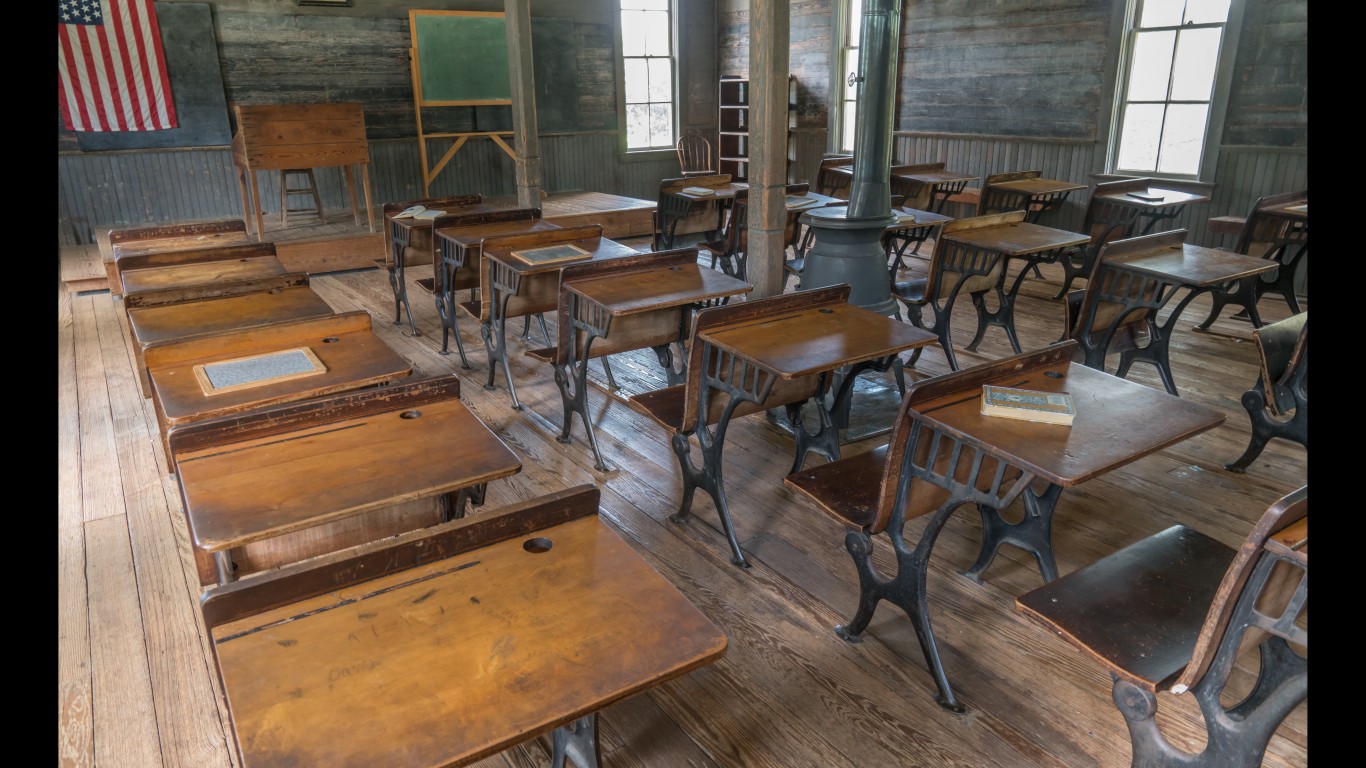
17. Classroom sizes were bigger
Classroom size, or the teacher-to-student ratio, was bigger. The New England Historical Society said classrooms 100 years ago had about 30 students. Today, the ratio is about 14.5 students for every teacher in public schools, and in private schools, it is one teacher for every 12.2 students.

18. Girls learned domestic skills/boys took shop
In the past, schools taught girls to mend and sew, skills that educators believed would prepare young women for the work world. They also learned to cook for their future husbands in home economics classes. Boys took shop and learned to use drills and punch holes in metal. The space for shop classes today is largely used to repair computers. Many states such as California have virtually done away with shop classes altogether.
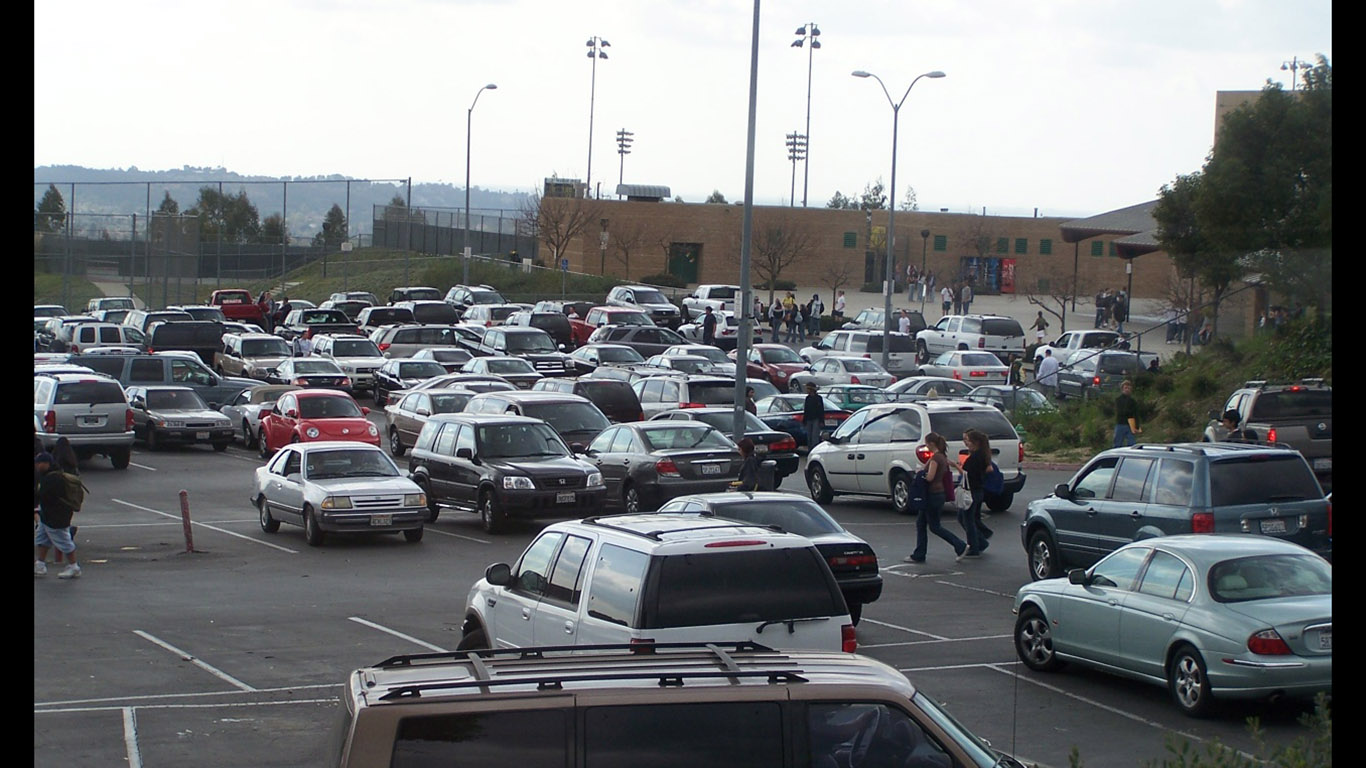
19. Fewer cars
Not all juniors and seniors had cars. And those who did drive to school drove mostly in used cars that required work. Today, the problem at many schools is not enough parking. Such is the case at John L. Miller-Great Neck North High School on Long Island, where the town weighed turning an athletic field into a parking lot to accommodate the students’ cars.
[in-text-ad-2]

20. School supplies were simpler
Forget organizers, Bluetooth portable keyboards, gel pens, calculators, notebooks with reusable paper, and scented markers. Back in the day, you had just books, notepads, pens, and pencils.

21. Christianity was part of daily school routine
In earlier times in our nation’s history, it was not unusual to have Christian lessons as part of daily instruction in schools in the United States, with students reading a passage from the Bible, usually at the start of school. That is no longer part of the day as the nation has become more diverse and includes children who practice other religions, such as Islam and Hindusim, or are not religious at all.
[in-text-ad]

22. Teachers gave students responsibility to teach
There were fewer teachers in the past and sometimes a teacher would teach multiple grades. Teachers gave teaching responsibilities to older students to help younger or slower students learn.
It’s Your Money, Your Future—Own It (sponsor)
Retirement can be daunting, but it doesn’t need to be.
Imagine having an expert in your corner to help you with your financial goals. Someone to help you determine if you’re ahead, behind, or right on track. With SmartAsset, that’s not just a dream—it’s reality. This free tool connects you with pre-screened financial advisors who work in your best interests. It’s quick, it’s easy, so take the leap today and start planning smarter!
Don’t waste another minute; get started right here and help your retirement dreams become a retirement reality.
Thank you for reading! Have some feedback for us?
Contact the 24/7 Wall St. editorial team.
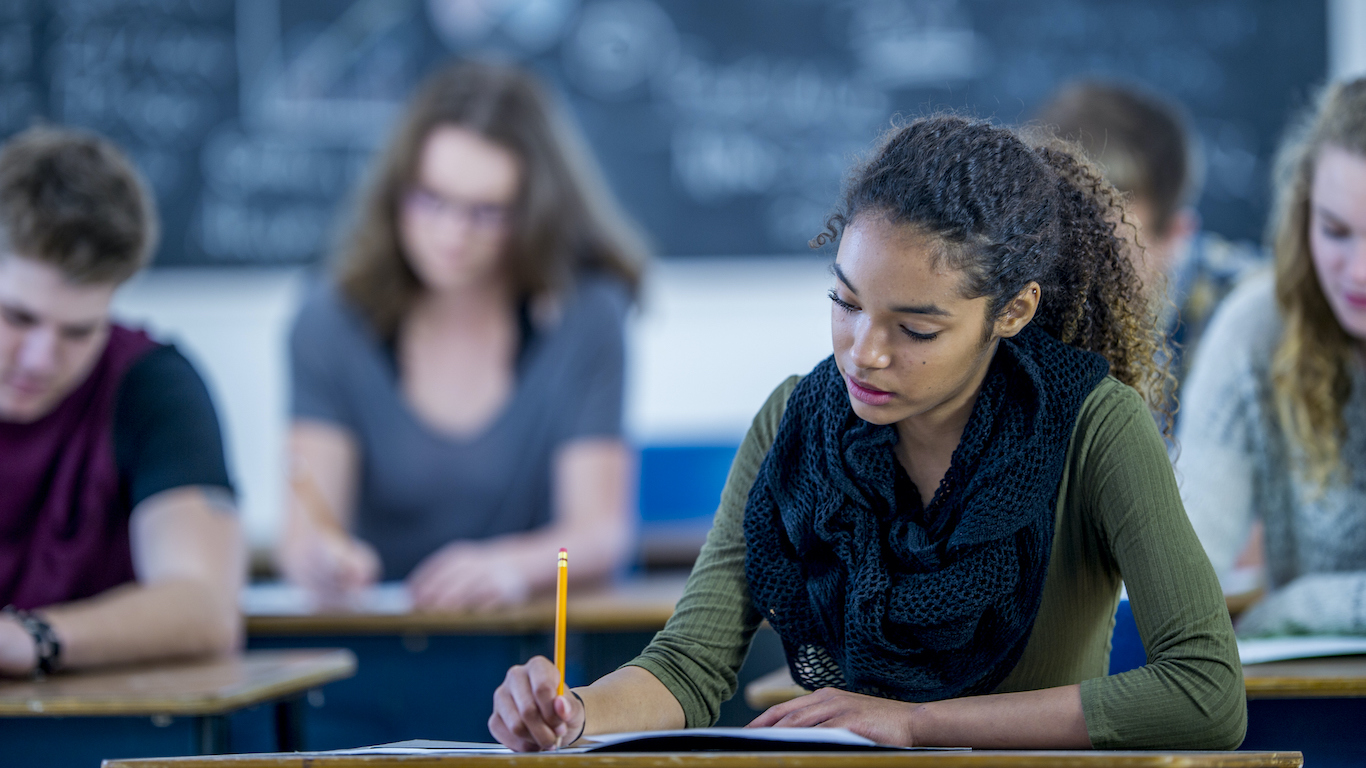 24/7 Wall St.
24/7 Wall St.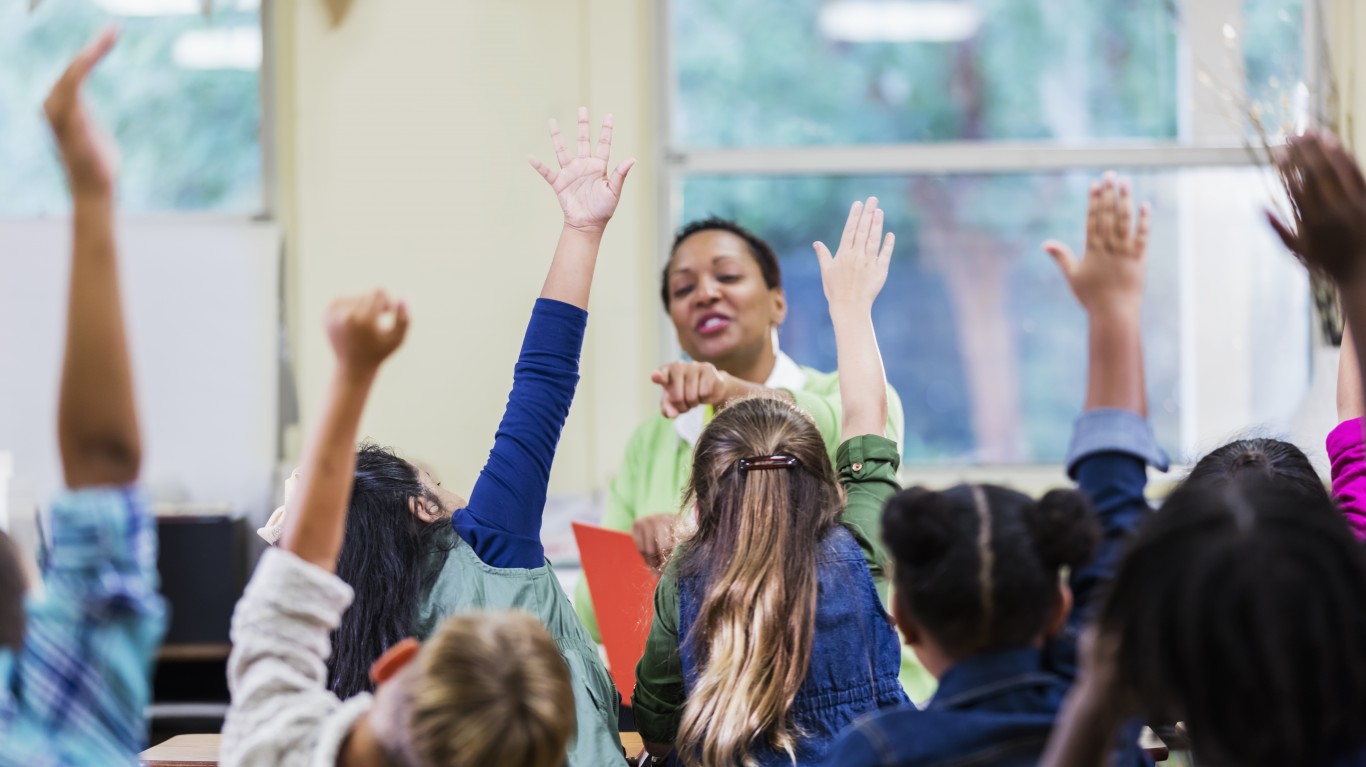 24/7 Wall St.
24/7 Wall St. 24/7 Wall St.
24/7 Wall St.
